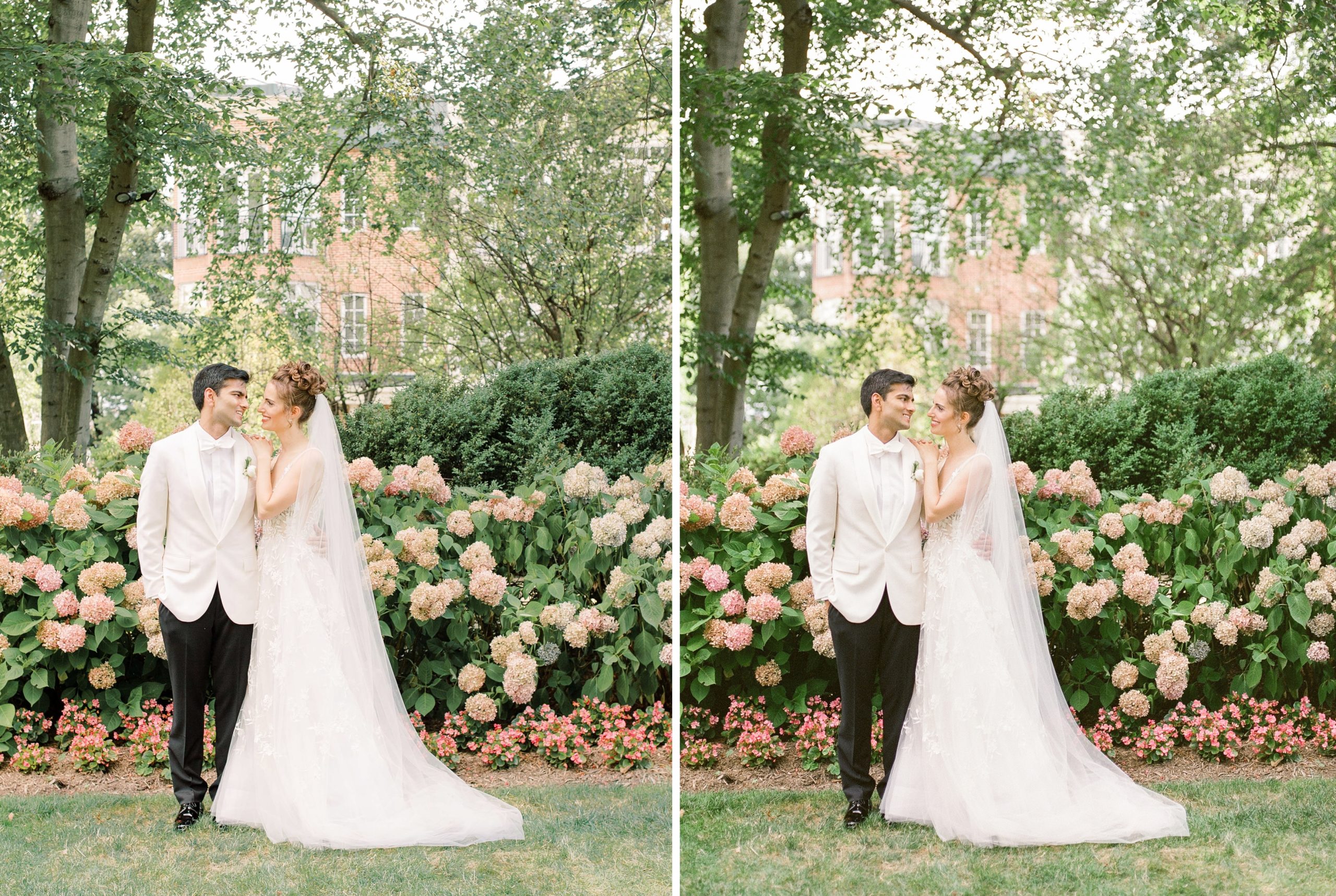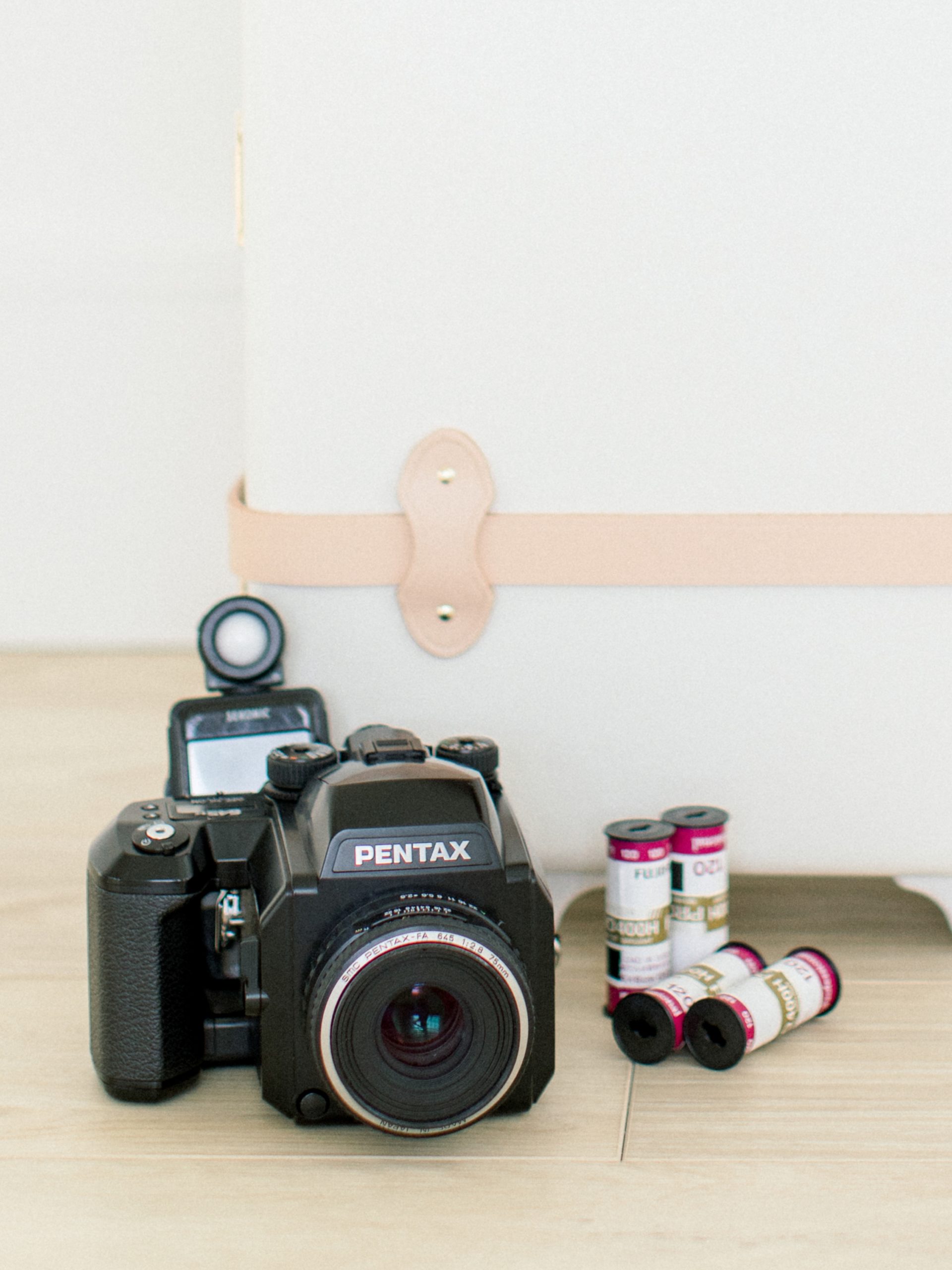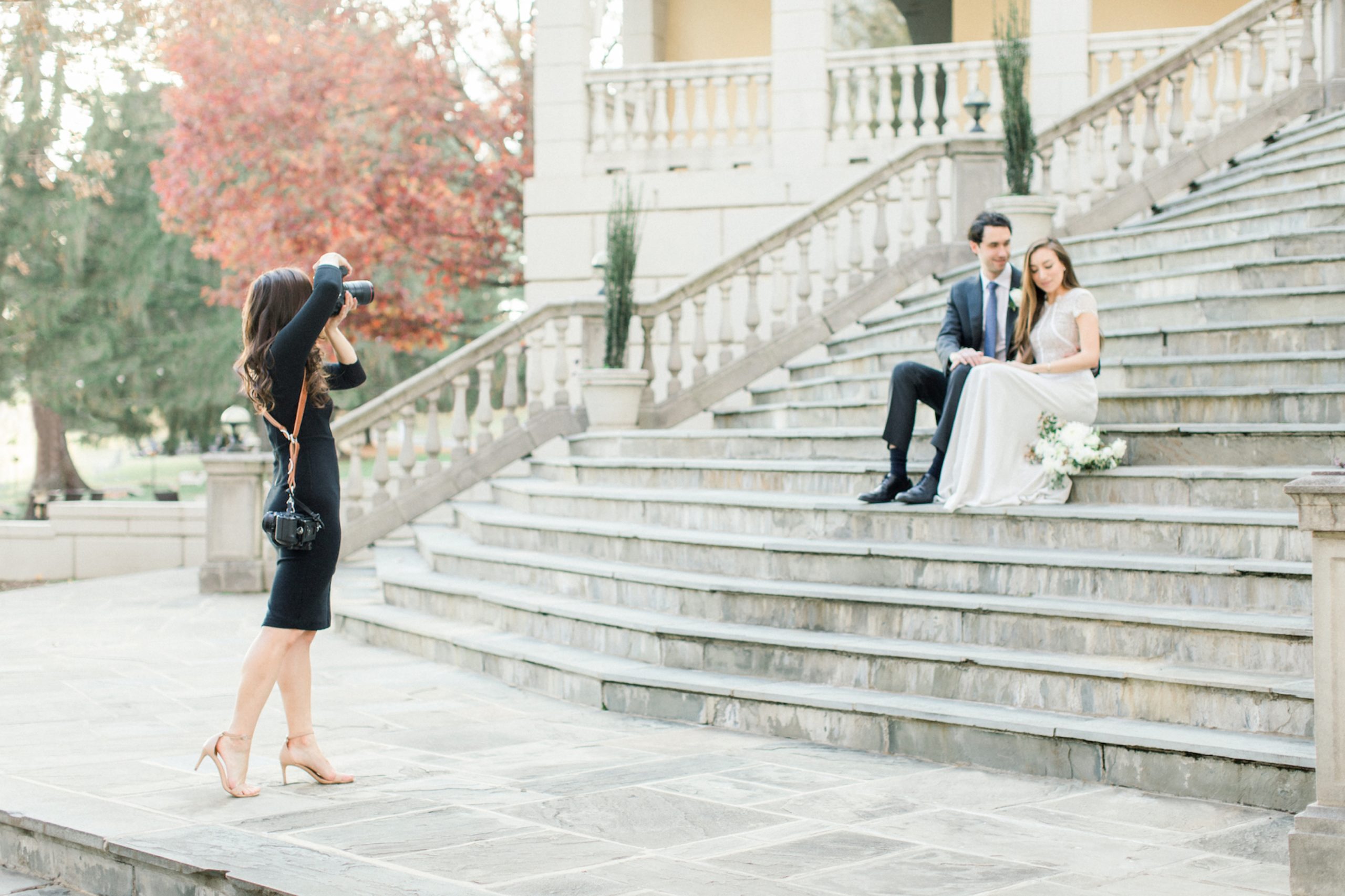As a newly engaged couple researching photographers, you’ve likely come across the term “film photographer” or “digital photographer” or even “hybrid photographer”. But what do those all mean? In the simplest of terms, it’s a wedding photographer describing which camera they use to photograph their clients — digital, film, or a combination of the two.
Personally, I see value in both formats, as each have their pros and cons, and have adopted a hybrid approach to my photography style! If I could only get one thing across to you though, it would be that both are just mediums to provide photos. As a hybrid photographer, I will select whichever format will produce the best images for my clients in the given situation. I edit all of my digital work to match my film work and do so so closely that most clients cannot tell the difference between the two within their gallery.

A look at film vs. digital shows there are minimal differences between the two formats.
As a professional photographer, it’s become second nature to know which format to use when and there are many different factors that go in to making the final decision. The three I focus on most closely are lighting, timing, and weather.
LIGHTING
If I had to limit my decision to only one factor, it would always be lighting. Film produces some of the most beautiful, dreamy imagery you can imagine… if you have the right light available. Without a significant light source, film will produce dull skin tones and muddy shadows. Digital photography is much more versatile and can work in almost any lighting situation.
TIMING
A medium format film camera can only capture 16 shots on one roll… trust me, that goes quickly! Even with a second shooter and an assistant rolling film, sometimes it simply isn’t the best choice when time is of the essence. Digital photography can rapid fire shot after shot when needed in those key moments or time crunches.
WEATHER
Why weather, you may be thinking? Well, for a couple reasons. First, film as you’ve probably started to ascertain, is the more delicate of the two formats. Most film cameras in circulation are many, many years old and require a bit of finesse — they are slow in the cold and practically impossible to use in the rain. Digital cameras have much newer technology that allows them to adapt to almost any weather situation. And as I mentioned above, film is a much slower format due to the near constant turnover of rolls…. so when you find yourself getting outdoor portraits in February, it might not be the best choice if you’re trying to get your freezing bride back inside ASAP!

What does this mean for a wedding day? First, I need to mention that no two wedding days are alike — there have been times where I’ve only used one or the other throughout an entire day! Every wedding is evaluated on a case by case basis, but often the allocation looks something like below:
FILM SITUATIONS
Getting ready & bridal details if in a well-lit suite.
Outdoor ceremonies with ample natural light.
Couples portraits and wedding party portraits when held outdoors.
DIGITAL SITUATIONS
Indoor ceremonies that have limited natural light.
Family portraits, as they often require multiple shots to ensure everyone is looking/smiling.
Anything including children and/or pets as it sometimes is hard to get them to sit still!
Receptions that are artificially lit or are after dark.

At the end of the day, I do believe it can be valuable for a client to understand what type of equipment their photographer is using and why. But the most important aspect of selecting a photographer is ensuring that you love their style through and through and that you see it replicated in full gallery after full gallery — not just their highlights — because this will ensure that you will receive something similar.
add a comment
+ COMMENTS